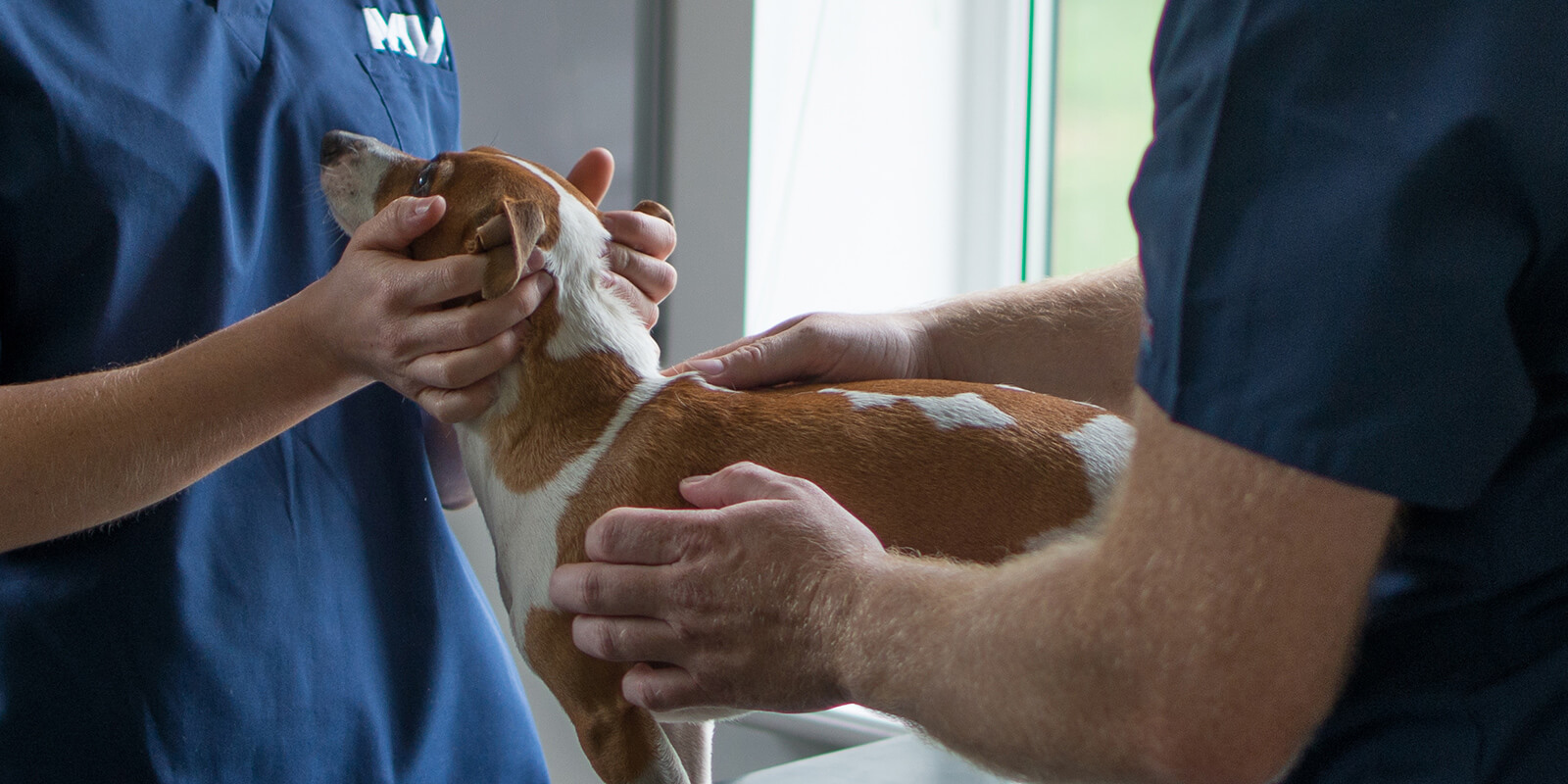
 Menu
Menu
Meniscal (cartilage) injury

What is Meniscal (cartilage) injury?
The medial and lateral menisci are fibrocartilaginous disks found in the stifle (knee joint) between the articulating surface of the femur and the tibia (thigh bone and shin bone). They permit gliding movement of the femur in relation to the tibial plateau (the top of the shin bone) and aid in load-bearing on the hindlimb. Damage to these structures, especially the medial meniscus, is common, especially in cases where a partial or complete rupture of the cranial cruciate ligament has occurred (see link).
The medial meniscus is more vulnerable to damage than the lateral meniscus, as it is more firmly attached to the tibia, the joint capsule and the collateral stifle ligament than the lateral meniscus. The lateral meniscus tends to be spared from this due to its more mobile attachments, as well as a further attachment to the back (caudal) femur, allowing it increased mobility. Studies demonstrating lateral meniscal injury are reported but medial meniscal injury is by far the more common occurrence (over 95% of acute and chronic cruciate ligament injury cases demonstrate medial meniscal injury).
Meniscal (cartilage) injury is something seen in isolation in people but this is rarely reported in cats and dogs. Most veterinary patients will suffer from other disease affecting the stifle joint, especially cranial cruciate ligament disease.
Meniscal injury can be found at the same time as cranial cruciate ligament injury or can occur weeks to months later, even following cranial cruciate ligament surgery. In the latter cases, this is referred to as late meniscal injury.
What are the signs of meniscal injury?
Meniscal injury can cause significant lameness and disruption of the normal ease of joint motion, leading to pain and effusion (increased fluid in the joint) and swelling of the joint. If the medial meniscus within the joint becomes torn from its normal position and is bent within the joint, a typical “click” can often be felt and sometimes heard when the dog/cat is walking or during examination of the joint.
How is meniscal injury diagnosed?
Meniscal injury may be suspected in dogs or cats presenting with a “clicking” lameness along with suspected cranial cruciate ligament injury or following cranial cruciate ligament injury. Definitive diagnosis is via direct inspection of the meniscal cartilage, either through stifle arthroscopy (keyhole surgery) or via an arthrotomy (open surgery of the joint) at the time of cranial cruciate ligament rupture surgery or later.
How is meniscal injury treated?
Some meniscal tears can be treated without surgery using exercise control and pain killers. However many patients require surgery to provide a more predictable recovery. Surgical treatment of meniscal injury is through the same approach as diagnosis i.e. via keyhole surgery or arthrotomy.
Treatment of meniscal injury is via one of several ways:
- Total meniscectomy- removal of the entire meniscus
- Partial meniscectomy- removal of the damaged portion of meniscus
- Hemimeniscectomy- removal of the caudal pole (back part) of the meniscus while the cranial pole (front part) is intact
- Primary meniscal repair- direct repair of any tear via suturing. This is technically demanding and results are poor due to poor blood supply and healing to the meniscus, so this is not commonly performed in veterinary patients.
Outcome
The outcome following meniscectomy can be very favourable as the lameness will often resolve relatively quickly. It is important that the underlying pathology is also addressed as failure to treat concurrent conditions could lead to an unpredictable outcome. Following meniscectomy osteoarthritis will develop but is not always a clinical problem.
Stay in touch
Follow us on social media and keep up to date with all the latest news from the Grove clinic.

